Schwefel 2.20 Function
Mathematical Definition
\[f(\mathbf x)=f(x_1, ..., x_n)=\sum_{i=1}^n |x_i|\]Plots
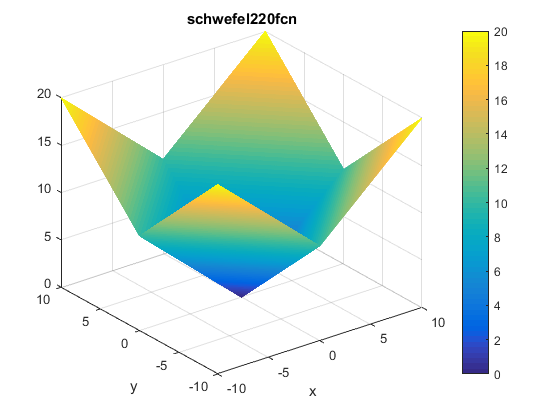
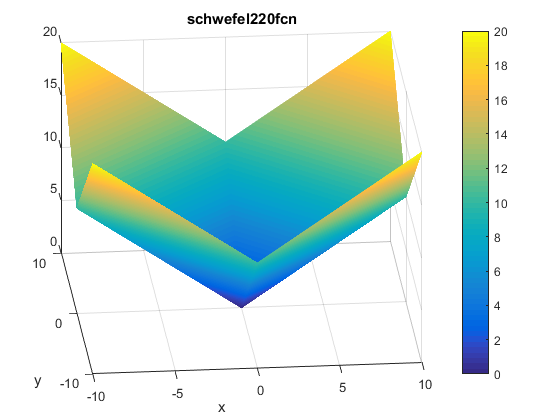
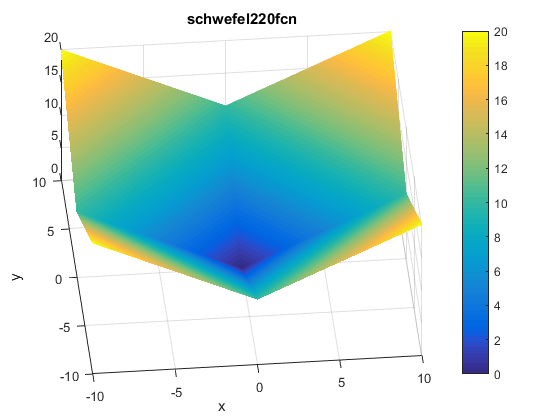
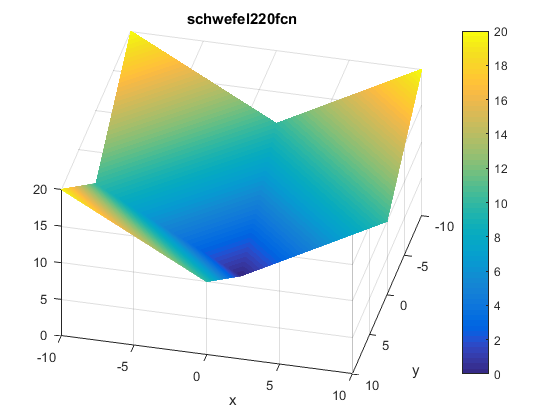
Contour of the function is presented below:
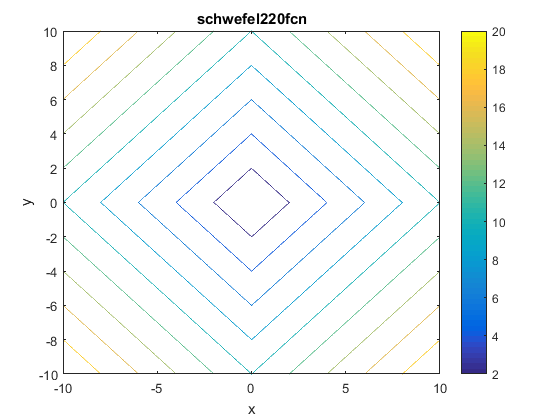
Description and Features
- The function is continuous.
- The function is convex.
- The function is defined on n-dimensional space.
- The function is unimodal.
- The function is non-differentiable.
- The function is separable.
Input Domain
The function can be defined on any input domain but it is usually evaluated on $x_i \in [-100, 100]$ for $i=1, …, n$.
Global Minima
The function has one global minimum $f(\textbf{x}^{\ast})=0$ at $\textbf{x}^{\ast} = (0, …, 0)$.
Implementation
Python
For Python, the function is implemented in the benchmarkfcns package, which can be installed from command line with pip install benchmarkfcns.
from benchmarkfcns import schwefel220
print(schwefel220([[0, 0, 0],
[1, 1, 1]]))MATLAB
An implementation of the Schwefel 2.20 Function with MATLAB is provided below.
% Computes the value of the Schwefel 2.20 function.
% SCORES = SCHWEFEL220FCN(X) computes the value of the Schwefel 2.20
% function at point X. SCHWEFEL220FCN accepts a matrix of size M-by-N and
% returns a vetor SCORES of size M-by-1 in which each row contains the
% function value for the corresponding row of X.
%
% Author: Mazhar Ansari Ardeh
% Please forward any comments or bug reports to mazhar.ansari.ardeh at
% Google's e-mail service or feel free to kindly modify the repository.
function scores = schwefel220fcn(x)
scores = sum(abs(x), 2);
endThe function can be represented in Latex as follows:
f(\mathbf x)=f(x_1, ..., x_n)=\sum_{i=1}^n |x_i|References:
- Momin Jamil and Xin-She Yang, A literature survey of benchmark functions for global optimization problems, Int. Journal of Mathematical Modelling and Numerical Optimisation}, Vol. 4, No. 2, pp. 150–194 (2013), arXiv:1308.4008
- H. P. Schwefel, “Numerical Optimization for Computer Models,” John Wiley Sons, 1981.